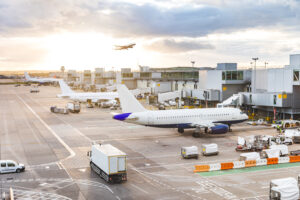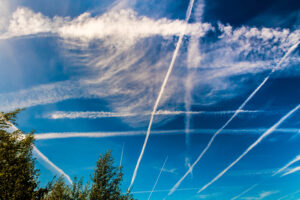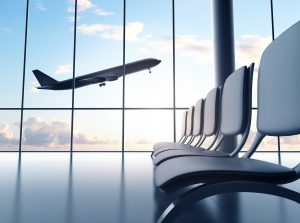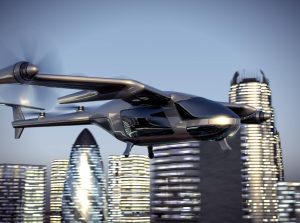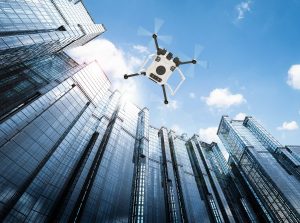Overview of Chinese AAM Market
Advanced Air Mobility (AAM) has emerged as a topic of considerable interest within the global aviation industry. While the Western hemisphere has demonstrated significant enthusiasm towards the AAM industry, there has been similar attention emerging in the East. This article focuses the spotlight on the dynamics of the Chinese AAM market.
For AAM to successfully commercialize, the key lies in close collaboration between four primary stakeholders: government, original equipment manufacturers (OEMs), operators, and infrastructure (ground / air) developers. To date, the Chinese AAM market has made remarkable progress, attributable to a multitude of efforts made by these stakeholders.
Government
The Chinese government has adopted a hands-on approach to spearheading initiatives in the aviation industry, with a particular emphasis on fostering collaboration between the industry and government entities. A prime example of this collaboration is the development of China’s first domestically-produced narrowbody aircraft, the C919. Local governments in Shanghai, Suzhou, Chengdu, and Jiangsu have signed strategic cooperation agreements with COMAC to deepen research and development (R&D) collaboration and build a strong aerospace manufacturing value chain.
In the emerging AAM market, the Chinese government has also led many top-down initiatives at both local and state government levels to support the AAM ecosystem. These initiatives have included the introduction of unmanned aerial vehicle (UAV) related laws and legislative framework for UAV initial airworthiness.
The Civil Aviation Administration of China (CAAC) is taking a unique approach in the development of the Chinese AAM industry. Instead of focusing on piloted operations, as the FAA and EASA are, it is focusing on developing autonomous flight operations for AAM from day one. This approach is predominantly motivated by the significant expected potential in unmanned cargo transportation and logistics which will benefit from developments in autonomous flight. Additionally, existing advancements in Chinese autonomous driving technologies are viewed as a suitable springboard for autonomous flight research.
Certification and Regulation
The CAAC has developed a comprehensive regulatory framework for the type certification and airworthiness approval processes of AAM aircraft. For an AAM aircraft to commercially enter into service, it involves four critical stages – design approval, type certification, production approval (Production Certificate, PC), and airworthiness approval (Airworthiness Certificate, AC).
The type certification process garners significant industry attention, as it provides an early indicator of an AAM vehicle’s potential success. AAM vehicles that are currently in the type certification process (started before January 2024) are managed under the CCAR-21 category using the Special Conditions framework as seen in Exhibit 1. Under this process, the key milestones for OEMs include the publishing of Special Conditions which sets up the certification basis and subsequently, the issuance of the type certificate (TC). These steps are essential in demonstrating compliance with stringent safety and operational standards set forth by the CAAC.
Exhibit 1. CAAC’s Procedure for Airworthiness Management of Civilian UAV Systems

Note: Early productions can be awarded TC-only Airworthiness Certificate before the OEM acquires the Production Certificate
Source: CAAC
The TC application for EHang’s EH216-S was the first for an autonomous flight electric vertical takeoff and landing (eVTOL) to be accepted by the CAAC in January 2021. Other OEM vehicles in development have only been granted the Special Flight Permit which allows the aircraft to temporarily fly in limited conditions for tests, or emergencies without meeting airworthiness requirements. The EH216-S received the world’s first TC in October 2023 and PC in April 2024, allowing EHang to deliver 23 aircraft in the last quarter of 2023. AutoFlight received TCs for the cargo eVTOL named Carryall in March 2024 and started certification process for passenger eVTOL named Prosperity in April 2024.
In January 2024, new regulations came into effect where the type certification process for unmanned vehicles became governed by a more Unmanned Aircraft Systems (UAS)-specific certification framework, the CCAR-92 . Nevertheless, the CAAC is expected to continue using the Special Conditions framework as mentioned above, before finalizing the development of a more comprehensive regulation and technical standards framework. This includes creating administrative documents such as Airworthiness Circular, Procedure documents under CCAR-92 and industry standards, which are expected to cover detailed requirements for UAS design, production, and operation. Previously issued certifications under the CCAR-21 framework remain effective.
Economics
The government has directed efforts to develop the Low-altitude Economy through a series of local and national initiatives first proposed in the 14th Five-Year Plan period, which spans from 2021 to 2025. eVTOLs will form an essential component of the Low-altitude Economy including passenger transport, logistics, civil uses (e.g., medical and organ transport), and aerial filming.
Exhibit 2. Policies to Drive Low-altitude Economy

Source: Alton, CAAC, Central Government of PRC
The government has provided strong support with clear top-down directives to develop the Chinese AAM market, aiming to replicate the success of the country’s electric vehicle (EV) industry. To date, there has been considerable support extended by the government in the regulatory and economic fronts, and efforts led by several OEMs in product development have progressed towards a certifiable vehicle and eventually commercialization.
OEM
Reaping the benefits of strong government support and access to capital, the eVTOL industry has grown quickly, enabling China to become one of the countries with the most eVTOL OEMs. Among the OEMs in China, EHang is one of the most promising, having received the TC and PC from CAAC. As previously noted, AutoFlight recently received type certificates for its cargo aircraft.
Exhibit 3. Comparison of Key Chinese AAM OEMs and Products45678

Source: Alton, Press Release
Most of the OEMs are backed by venture capital and founded by individual investors, with some managing to secure funding directly from, or through affiliated holdings of, Chinese tech giants such as Alibaba and Tencent. Contrary to the West, there appears to be a lower level of participation from the Chinese aerospace and aviation industries, which is reflected by the OEMs’ lack of partnership announcements with industry players.
Though being awarded the all three certifications (TC, AC, PC) for EH216-S places EHang ahead of its peers, the TC imposes multiple restrictions on aircraft operations such as limiting the operations to isolated airspace and preferably over sparsely populated areas. EHang has also mentioned in its Q3 2023 earnings call that preparations in the areas of safety operational regulations, personnel training, and establishment of maintenance system are still underway. This suggests that the product may not be fully mature yet for widescale commercialization, which could be anticipated given the additional complexity of autonomous rather than piloted flights.
China’s robust supply chain, coupled with its strengths in drone manufacturing, battery and EV development, as well as autonomous driving technologies, will lend their weight to the development of autonomous eVTOLs. Chinese OEMs, including EHang, may leverage this foundation to achieve a breakthrough in the commercialization of autonomous flights in the near future.
Operator
OEMs have developed eVTOL aircraft for a variety of potential use cases to suit operators’ differing mission requirements. To date, leading Chinese OEMs have opted to focus on a specific subset of use cases. Commercialization is expected to begin in the field of logistics and sightseeing due to the lower risk profile and comparably greater ease of operations compared to passenger travel. Expansion into the passenger travel segment is expected to require further evaluation of public perception on areas including safety and privacy. This cautiousness is evident in the marginal interest shown by Chinese commercial airlines (except for some charter operators) in the form of orders for eVTOLs built by Chinese or Western OEMs, nor any publicly announced partnerships with AAM OEMs.
Exhibit 4. Key Chinese OEM Orderbook (as of December 2023)

Source: Alton, AAM Reality Index
Among the Chinese OEMs, Ehang has the largest orderbook which could be attributed to its product maturity and variety of use cases, putting it ahead of its peers. Most of Ehang’s orderbook in China is from non-airline operators looking to use the EH216-S for aerial sightseeing which aligns with the consensus that non-passenger transport use cases will pave the way for AAM commercialization.
Based on publicly announced orders, uptake of Chinese AAM aircraft by operators outside of China appears minimal. Notable exceptions are certain Japanese/ Korean operators and UAE-based Wings Logistics Hub which has recently placed an order for the EH216 and will work with EHang to support local certification and operations of the eVTOLs in the UAE. Although orders outside of China are few and far between, Chinese domestic operators are likely able to provide sufficient and sustainable demand for the OEMs as observed in the EV market. Furthermore, the issuance of TC, AC, and PC to EHang also signals confidence in the aircraft’s technologies and may drive more orders from both domestic and internationally-based operators.
Infrastructure Developer
Similar to conventional commercial and business aviation aircraft, eVTOLs require both ground and air infrastructure to safely operate at scale.
- Ground infrastructure – typically in the form of “vertiports” for eVTOLs – comprises elements such as landing/parking bays and .the associated passenger facilities, charging facilities, and MRO services
- Air infrastructure includes features related to urban and unmanned air traffic management systems, as well as advanced communications and surveillance systems
However, Chinese AAM infrastructure is still in the nascent stage with many initiatives being government-led. There are several pilot AAM test flight and operations zones under construction by the OEMs, but most are spearheaded by the government. These include:
- The East China UAV Base, launched in 2018 as the first UAV test base led by the government. The testing base currently manages approximately 270km2 of airspace for unmanned aircraft operations. AutoFlight recently performed testing flights with the company’s V1500M cargo eVTOL at the base; and
- The Bao’an District Government of Shenzhen and EHang has established a UAM Operation Demonstration Center at the OH Bay to kickstart aerial tourism and sightseeing experience services with EH216-S
Apart from project launches, the government has also introduced guidelines aimed at establishing a vertiport standard to encourage more activities / investment in the segment.
This differs from the bottom-up approach commonly seen in the West. We expect more participation from infrastructure developers when additional eVTOL designs have been certified and made inroads into the market, since infrastructure development tends to be an afterthought compared to the attention received by OEMs.
Conclusion
The Chinese AAM ecosystem is one that sees significant backing by the government and its coordinated efforts with industry. However, apart from the government and the few leading OEMs, other parts of the ecosystem have been slower in AAM development. As the technology is not yet fully mature, other ecosystem stakeholders have been much more conservative in pursuing adoption and committing to key milestones.
Looking to the future, government and regulator efforts will play a pivotal role in driving the AAM ecosystem in China forward. The absence of such support could lead to delays in the commercialization process, hindered by a lack of demand by operators and gaps in infrastructure development even as the aircraft technology approaches readiness. Similarly, OEMs need to continue their push to ensure product maturity or reconsider autonomous flights if they want to secure a leading position in the emerging eVTOL commercial passenger flight sector.
The overall strength of the AAM ecosystem hinges on the contributions of each stakeholder. The industry’s success depends on the collaborative effort of all parties to bridge existing gaps.
[1] Civil Aviation Products and Parts governs the general certification procedures and the applicable airworthiness standards for type certification of new and changed products including aircraft and engines
[2] Operating Safety Management Requirements for Civilian UAS which include general rules and regulations covering UAS airworthiness management on design, production as well as the operation management
[3] The Low-altitude Economy (低空经济) refers to a comprehensive set of activities centered around civil-manned and unmanned aerial vehicles, including manufacturing, low-altitude flight operations, and integrated services. The low-altitude airspace covers that between 120m and 1,000m but can extend up to 3,000m depending on the operation areas.
[4] XPeng was first founded as an electric self-driving vehicle automobile company, but created a subsidiary known as XPeng AeroHT following the acquisition of eVTOL developer, Huitian
[5] Data sourced from Pitchbook, except otherwise noted
[6] Data sourced from SEC 20-F filing as of Mar. 31, 2023
[7] Emergency medical services
[8] EIS were estimated based on the company’s press release or other news reports






